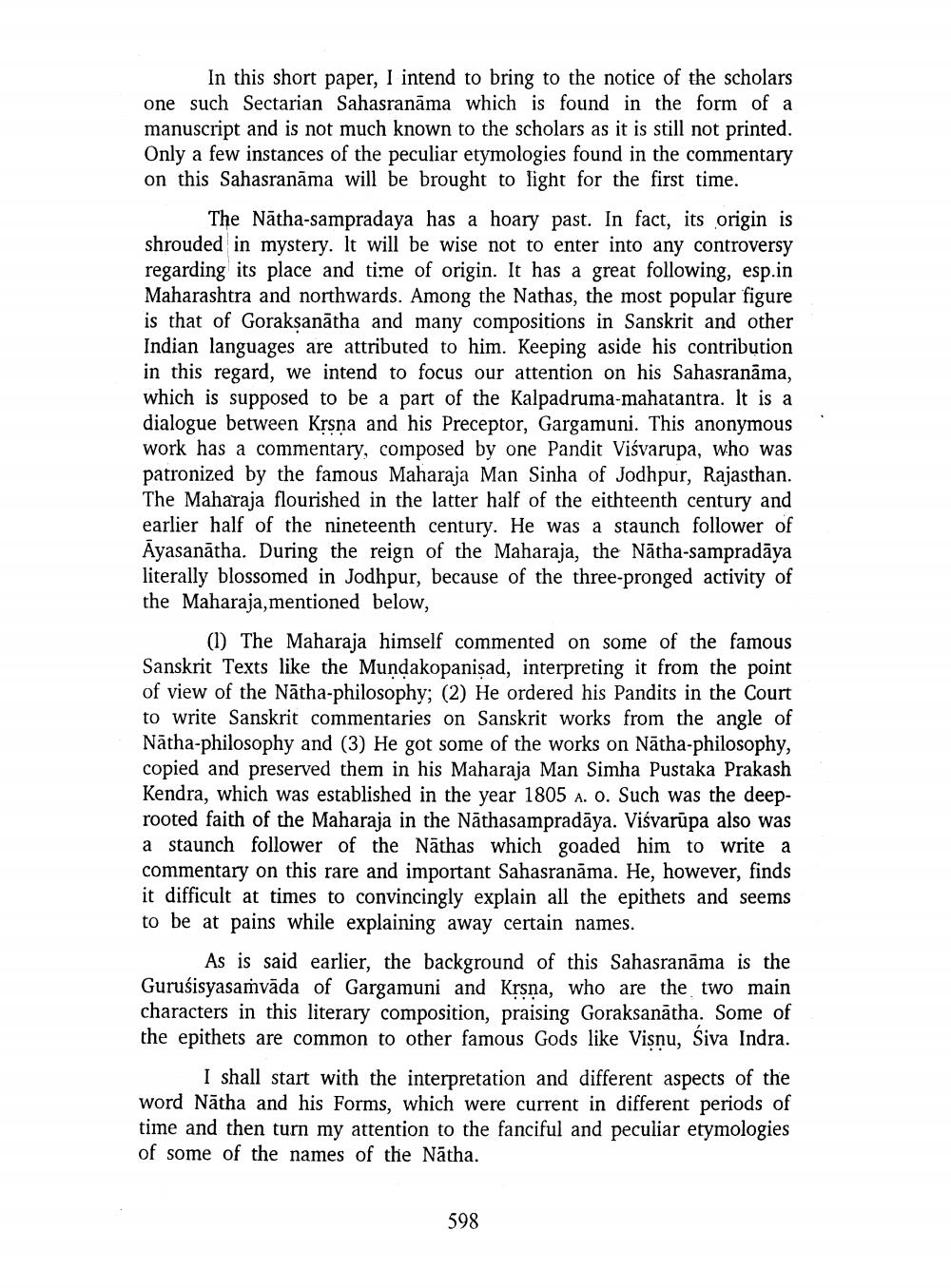________________
In this short paper, I intend to bring to the notice of the scholars one such Sectarian Sahasranāma which is found in the form of a manuscript and is not much known to the scholars as it is still not printed. Only a few instances of the peculiar etymologies found in the commentary on this Sahasranāma will be brought to fight for the first time.
The Nātha-sampradaya has a hoary past. In fact, its origin is shrouded in mystery. It will be wise not to enter into any controversy regarding its place and time of origin. It has a great following, esp.in Maharashtra and northwards. Among the Nathas, the most popular figure is that of Goraksanātha and many compositions in Sanskrit and other Indian languages are attributed to him. Keeping aside his contribution in this regard, we intend to focus our attention on his Sahasranāma, which is supposed to be a part of the Kalpadruma-mahatantra. It is a dialogue between Krsna and his Preceptor, Gargamuni. This anonymous work has a commentary, composed by one Pandit Viśvarupa, who was patronized by the famous Maharaja Man Sinha of Jodhpur, Rajasthan. The Maharaja flourished in the latter half of the eithteenth century and earlier half of the nineteenth century. He was a staunch follower of Ayasanātha. During the reign of the Maharaja, the Nātha-sampradāya literally blossomed in Jodhpur, because of the three-pronged activity of the Maharaja, mentioned below,
(1) The Maharaja himself commented on some of the famous Sanskrit Texts like the Mundakopanisad, interpreting it from the point of view of the Nātha-philosophy; (2) He ordered his Pandits in the Court to write Sanskrit commentaries on Sanskrit works from the angle of Nātha-philosophy and (3) He got some of the works on Nātha-philosophy, copied and preserved them in his Maharaja Man Simha Pustaka Prakash Kendra, which was established in the year 1805 A. 0. Such was the deeprooted faith of the Maharaja in the Nāthasampradāya. Viśvarūpa also was a staunch follower of the Nāthas which goaded him to write a commentary on this rare and important Sahasranāma. He, however, finds it difficult at times to convincingly explain all the epithets and seems to be at pains while explaining away certain names.
As is said earlier, the background of this Sahasranāma is the Guruśisyasamvāda of Gargamuni and Krsna, who are the two main characters in this literary composition, praising Goraksanātha. Some of the epithets are common to other famous Gods like Visnu, Siva Indra.
I shall start with the interpretation and different aspects of the word Nātha and his Forms, which were current in different periods of time and then turn my attention to the fanciful and peculiar etymologies of some of the names of the Nātha.
598




